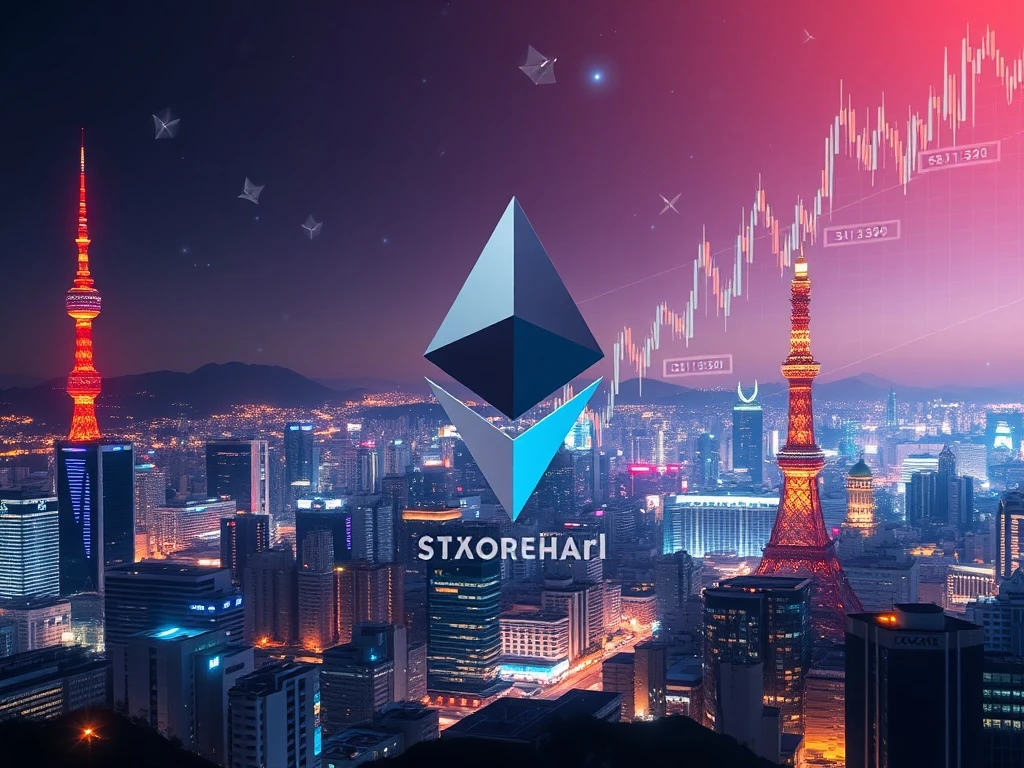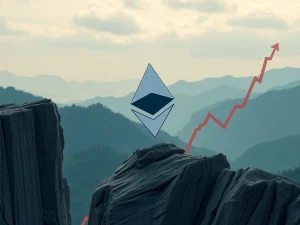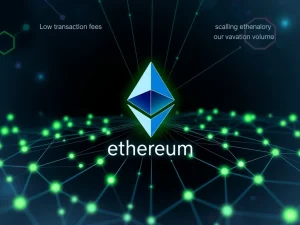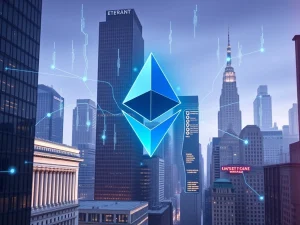Ether Price Alert: Korean Retail Capital’s Pivotal Role in Ethereum’s Trajectory

The cryptocurrency market often sees diverse forces influencing asset valuations. Currently, a significant narrative suggests that Ether price is experiencing substantial momentum, partly fueled by a surprising source: Korean retail investors. This trend has drawn attention from industry experts, including Samson Mow, CEO of Bitcoin technology company Jan3, who highlights the critical role of this capital in Ethereum’s current valuation.
Korean Retail Investors Drive Ethereum’s Ascent
Korean retail investors are emerging as a powerful force in the cryptocurrency market. Their capital is notably contributing to the upward trajectory of Ether (ETH), the world’s second-largest cryptocurrency. This domestic demand is not just a minor factor; it is a significant driver alongside global institutional investments and corporate treasuries. Many observers believe this influx of retail funds helps keep the Ether price buoyant, even as it approaches its all-time highs.
Industry figures like Samson Mow have pointed to the substantial impact of this retail participation. He suggests that approximately $6 billion worth of Korean retail capital is a key factor supporting both ETH’s price and the growth of corporate Ethereum treasury firms. This indicates a deep level of engagement from individual investors within South Korea.
Samson Mow’s Insight and Warning
Samson Mow, a prominent voice in the crypto space, offers a compelling perspective on this trend. He observes that “ETH influencers have been flying to South Korea just to market to retail.” Mow expresses concern, stating that many of these investors “have zero idea about the ETHBTC chart and think they’re buying the next Strategy play.” He warns that this situation “won’t end well,” implying potential volatility or an unsustainable foundation for the current price levels.
Mow’s caution underscores a potential disconnect. While retail enthusiasm can drive prices, a lack of fundamental understanding regarding market dynamics, especially the ETH/BTC ratio, could expose these investors to higher risks. His comments prompt a deeper look into the sustainability of this retail-driven momentum and its long-term implications for the Ether price.
The Kimchi Premium: A Key Indicator
One of the clearest signals of strong Korean retail investor engagement is the “Kimchi premium.” This phenomenon occurs when the price of a cryptocurrency trades higher on South Korean exchanges compared to international platforms. The premium acts as a direct indicator of elevated demand from local traders.
- Recent Surge: Ether’s Kimchi premium recently rose to 1.93 on Sunday. This marks a significant increase from -2.06 observed on July 16, when Ether traded below $2,959.
- Market Impact: A positive Kimchi premium suggests that Korean buyers are willing to pay more for ETH. This pushes prices higher on domestic exchanges, reflecting robust local demand.
- Historical Context: The premium has historically been a strong signal of Korean market sentiment. Its fluctuations often mirror periods of intense retail interest or cooling demand.
Data from blockchain platform CryptoQuant clearly illustrates this trend. The “Korea Premium Index” shows a notable upward movement, reinforcing the idea that Korean investors are actively participating in the market. Marcin Kazmierczak, co-founder of blockchain oracle firm RedStone, acknowledges the significance of the Kimchi premium. However, he also cautions against overstating its sole influence.
Korean Exchanges and Trading Volume
South Korean retail traders primarily utilize two major centralized exchanges (CEXs): Upbit and Bithumb. These platforms facilitate a substantial volume of cryptocurrency trading within the country. Examining futures data provides further insight into the scale of their activity.
Over the past week, Upbit ranked as the 10th largest CEX globally in terms of Ether futures trading. It recorded an impressive $1.29 billion worth of trading volume, according to CoinGlass data. This substantial volume indicates significant speculative interest and active participation from Korean traders in derivatives markets.
Typically, crypto futures trading volume often surpasses spot trading volume. Consequently, it exerts a higher impact on the underlying asset’s price. The robust activity on Korean exchanges, particularly in futures markets, therefore plays a direct role in shaping the Ether price trajectory.
The Broader Ethereum Treasury Debate
While Korean retail capital plays a role, the broader discussion around Ethereum’s valuation extends to the sustainability of Ethereum treasury firms. These entities hold significant amounts of ETH, often based on specific investment theses. However, their long-term viability has faced scrutiny from various industry watchers.
For instance, Andrew Kang, founder of Mechanism Capital, criticized BitMine founder Tom Lee’s Ether thesis last September. Kang argued that Lee’s thesis overstated Ether’s value accrual from stablecoins and real-world asset (RWA) tokenization. Kang contended that “Ethereum’s valuation comes primarily from financial illiteracy.” While acknowledging that such a phenomenon “can create a decently large market cap,” he firmly stated that “the valuation that can be derived from financial illiteracy is not infinite.”
This debate highlights a fundamental tension: is Ethereum’s value derived from robust fundamentals and technological adoption, or is it inflated by speculative retail interest and a lack of financial literacy? Kang suggests that while “broader macro liquidity” has supported Ether’s price momentum, the network ultimately requires “major organizational change” to prevent “indefinite underperformance.”
Global Capital vs. Local Dynamics
Marcin Kazmierczak offers a more nuanced perspective, emphasizing Ethereum’s diverse global capital base. He argues that characterizing Korean retail investors as the “primary support” for Ethereum significantly underestimates the network’s broader strength. This global base includes:
- Substantial US institutional investment: This comes through various channels, including newly approved ETFs.
- Corporate treasuries: Many companies hold ETH as part of their balance sheets.
- Vast DeFi ecosystem: Decentralized finance protocols heavily rely on ETH for collateral, gas fees, and liquidity.
Kazmierczak asserts that Ethereum’s true strength lies in its “borderless nature.” This combines significant Korean retail enthusiasm with widespread global institutional participation. Therefore, while Samson Mow highlights a specific regional driver, the overall picture of Ethereum’s valuation is far more complex and multifaceted. It involves a global tapestry of investors, developers, and users contributing to its ecosystem and market value.
Conclusion: A Balanced Outlook for Ether’s Future
The current landscape of the Ether price is undoubtedly influenced by a confluence of factors. Korean retail investors, as highlighted by Samson Mow, play a critical role, evidenced by the rising Kimchi premium and significant trading volumes on local exchanges. Their enthusiasm undeniably contributes to current price momentum.
However, it is crucial to consider the broader context. While local retail demand is strong, Ethereum also benefits from a robust global institutional presence, corporate treasury adoption, and a thriving DeFi ecosystem. Experts like Marcin Kazmierczak underscore this diverse capital base, suggesting that Ethereum’s resilience stems from its global and multifaceted appeal. The ongoing debate surrounding Ethereum treasury firms and the sustainability of certain valuation models further adds complexity. Ultimately, Ether’s trajectory will depend on a careful balance between these localized retail-driven surges and its fundamental, global adoption and utility.









